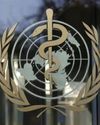
Over the last several years, many a vision statement projected a robust trajectory for the pharmaceutical industry by the year 2020. The widely accepted projections held out by representatives of the Indian government and industry pegged the pharmaceutical segment at $55 billion by 2020. It is 2020. But is the industry there yet?
An earlier international report by PwC had used the iconic Dickensian line, “It was the best of the times, it was the worst of times”, to describe the global pharmaceutical landscape fraught with challenges and opportunities.
The same could be said of the Indian pharmaceutical arena, with the last decade seeing some defining cases on the patent regulatory pathway in the early years, for instance. But as the decade ended, discussions around a country’s right to use a compulsory licence (CL), for example, continue to raise the temperature on both sides of the pharmaceutical divide, some saying the provision is used too little and others claiming exactly the opposite. A CL allows a country to get a third manufacturer to make an innovative drug at a reduced price and on payment of royalty, in the larger public interest.
This story is from the January 04, 2020 edition of The Hindu Business Line.
Start your 7-day Magzter GOLD free trial to access thousands of curated premium stories, and 9,000+ magazines and newspapers.
Already a subscriber ? Sign In
This story is from the January 04, 2020 edition of The Hindu Business Line.
Start your 7-day Magzter GOLD free trial to access thousands of curated premium stories, and 9,000+ magazines and newspapers.
Already a subscriber? Sign In

Covid Presents An Opportunity For India
India must attract investors exiting China post-Covid. Streamlining of project clearances and relaxation in FRBM norms will help

Did Alternative Assets Shield You From Covid-19 Volatility?
The assets closely linked to stock and debt markets could not stave off the losses

How To Put Aircraft To Bed
Preserving grounded planes, to get them up and flying at short notice, is a challenging task. Ashwini Phadnis captures the process

There Can Be No Going Back On WFH
Covid-19 has fast-forwarded the shift to ‘work from home’. However, some face-to-face connect will always be needed

UN, WHO Urged To Ensure ‘Benefit Sharing' Of Covid-Related Data
Biopharma firms should reach vaccines, medicines to poor nations at an affordable price, say civil society bodies

With No Clear Signal From Rlys, States Explore Ways To Bring Back Migrants
Quarantine centres, cross-country buses being arranged even as migrants hop on to boats, trucks and ambulances

Centre Allows All Neighbourhood Shops To Open But With Riders
Final call will be taken by local authorities; shopping complexes that draw fewer ‘outsiders’ are permitted to operate

Covid Impact Relatively Muted In India
Compared to Italy and the US, India’s rate of infection spread has been slow. This can be attributed to the strict measures in place

How Global Trade Will Fare Post-Covid
China isn’t likely to lose its pre-eminent position soon. India, for one, will need to make manufacturing globally competitive

How To Curb Harassment In The Virtual Office
Training and sensitisation are essential. Institute a strict dress code and chat etiquette to ensure professionalism during video calls